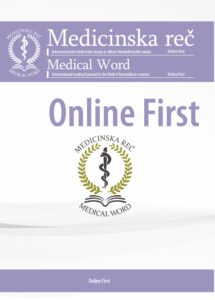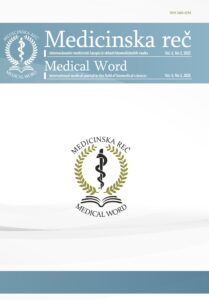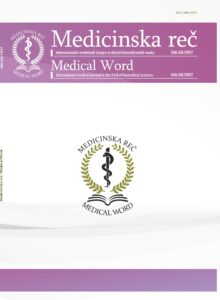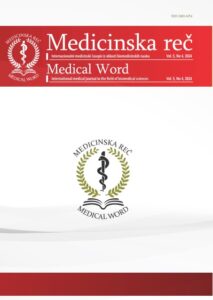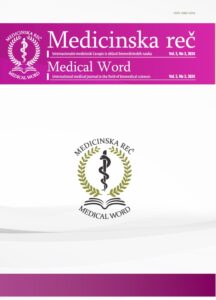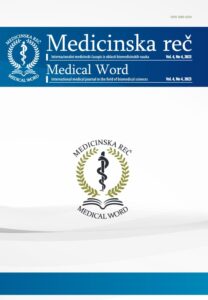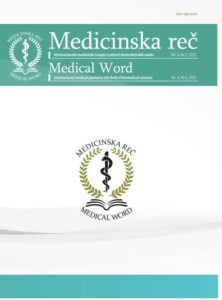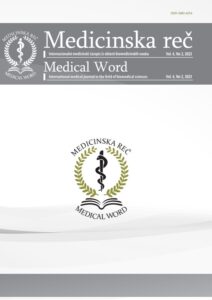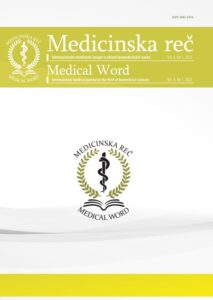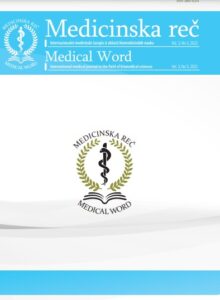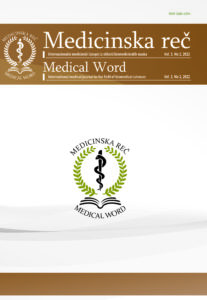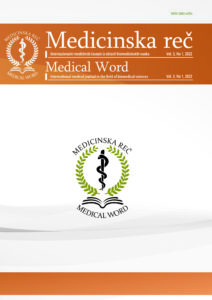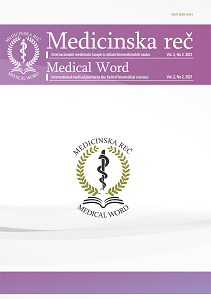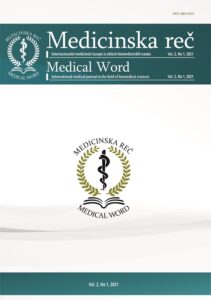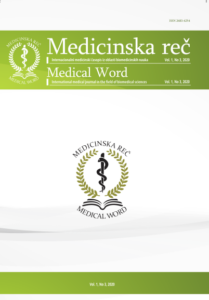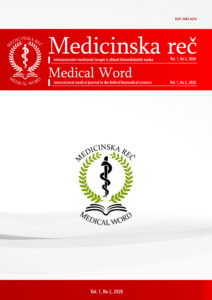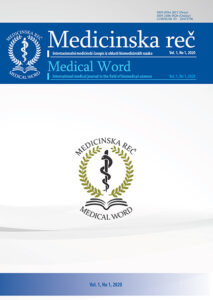Therapy of skeletal anomalies using orthodontic camouflage
Medical Word 2021; 2(2): 55–60
https://doi.org/10.5937/medrec2102055K
Original Article
Abstract
Camouflage is a therapeutic procedure used to treat orthodontic anomalies after the cessation of pubertal growth acceleration. The goal of camouflage is to treat skeletal inconsistencies based on tooth extraction. In that way, good intercuspation of lateral teeth and a correct ratio of incisors are achieved, despite skeletal discrepancy.
Indications for this procedure refer to patients with moderate and mild distal bites, patients with mild mesial bites, patients who are “too old” for growth modification therapy, and patients with good vertical proportions.
Contraindications refer to patients with crowded teeth and incisions of the incisors, patients with good growth potential (it is necessary to use functional orthodontic appliances), severe skeletal discrepancies (when orthognathic surgery is performed) and patients with pronounced vertical disproportions.
The method of treatment involves placing an orthodontic appliance in the upper and lower jaw. Retention is mandatory after removing the upper and lower appliance because the teeth tend to return to their original position. Possible side effects are instability and unpredictability of therapeutic results over time (relapses), and patients are sometimes only partially satisfied with aesthetic changes.
Key words: camouflage, skeletal discrepancy, growth modification, mesial bite, distal bite
References
- Proffit WR. Fields HW, Sarver DM. Contemporary Ortodontics, 4th ed. St Louis: Mosby; 2007.
- Demirović D. Osnovi fiksne tehnike u ortodonciji. Sarajevo: Stomatološki fakultet Sarajevo, Arka press; 2005: 57-85.
- Bowman J. Johnston LE. The esthetic impact of extraction and nonextraction treatments on Caucasian patients. Angle Orthod 2000; 70: 3-10.
- Milačić M. Ortodoncija: sadašnjost za budućnost. Beograd: Akademska misao; 2015: 105-8.
- Stojanović Lj, Stefanović N, Pajević T, Gallucio G. Osnovi fiksne terapije, praktikum. Beograd: Stomatoloski fakultet Univerziteta u Beogradu; 2020: 21-9.
- Janosevic M, Stosic M, Filipovic G. Dentoalveolarne karakteristike malokluzije II klase 2. odeljenja i normalne okluzije. Acta Stomatol Naissi 2005; 21(49): 391-404.
- Alhammadi MS, Halboub E, Fayed MS, Labib A, El- Saaidi C. Global Distribution of Malocclusion Traits: A Systematic Review. Dental Press J Orthod 2018; 23(6):40.e1-40.e10.
- Pajevic T, Juloski J, Živković M. Terapija malokluzije II klase 1. odeljenja kod odraslih pacijenata primenom mini-implanata-prikaz bolesnika. Stomatološki glasnik Srbije 2020; 67(3):159-64.
- Stahl F, Baccetti T, Franchi L, McNamara JA Jr. Longitudinal growth changes in untreated subjects with Class II Division 1 malocclusion. Am J Orthod Dentofacial Orthop. 2008; 134(1): 125-37.


